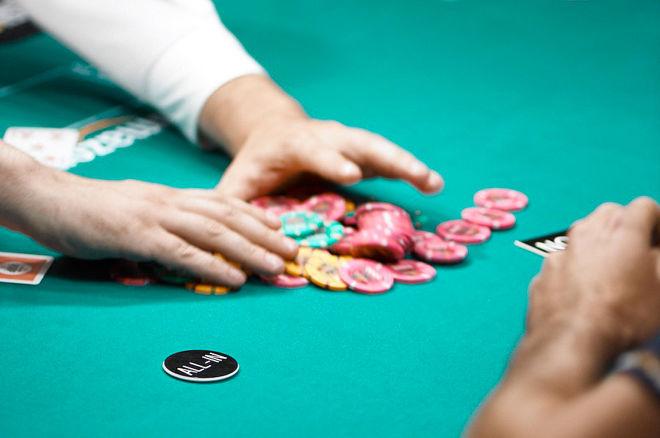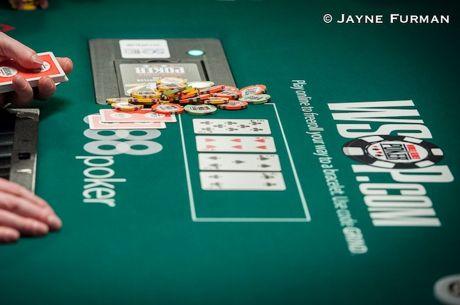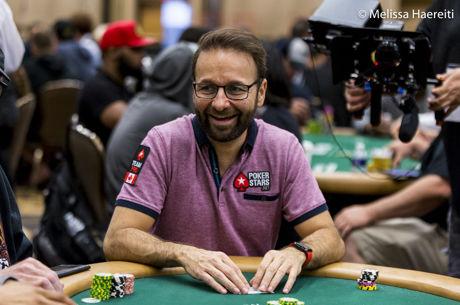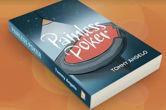Exploiting 'Maniacs' and 'Bridge Jumpers'

I play a lot of $1/$2, $1/$3, and $2/$5 no limit hold'em. I make the bulk of my money not by outplaying other excellent players, but by finding deep-pocketed poor players — and playing my best game against them.
In previous articles, I've addressed methods for exploiting some of those bad players. Here's a method for dealing with two other brands of poor player, ones I call the "maniacs" and "bridge jumpers." I'll describe them each in turn below.
Your first job is to find them. That's not always easy, as they aren't always around. But when they are, they're fairly easy to spot.
First off, look for players who are routinely betting huge multiples of the big blind — e.g., in a $1/$2 game opening for $25. Then you need to differentiate between the two types. Toward that end, let's look first at the maniac.
Distinguishing "Maniacs" from "Bridge Jumpers"
A maniac, the better known of the two archetypes, is known for playing a wide and extremely weak range, and playing it very aggressively without much regard to strategy. He does this when he is the first to enter the hand, sometimes with a raise to 10x the BB or more, and he does this with over-the-top raises that can be for as much as his entire stack.
His primary motivation is to gamble it up. And so he does, sometimes raising without even looking at his cards, then overbetting (even shoving) on the flop with an enormous range, especially if he has position and no one has bet.
A bridge jumper is a different breed entirely. The origins of his name explain why.
The term comes from horse racing, a reference to the type of punter who makes a huge amount on what he judges to be the safest, least risky bet available, typically the heaviest favorite. And for added safety, he will bet in the show pool, meaning he'll still win as long as his horse finishes first, second, or third.
With the minimum return on a $2.00 bet set at $0.10, the most dramatic bridge jumper would bet his entire bankroll — let's say $200,000 — to win $10,000.
Given that the odds of him winning are often better than 10-to-1 in his favor, he will usually win his bet and smugly pick up his tidy $10,000. And in the very unlikely event that he lost his entire bankroll of $200,000? Well, he'd end it all by jumping off a bridge — hence the name.
Isolating the "Maniac"
The right line of attack against the maniac, generally, is just to play a narrower range and usually to play it aggressively, reraising him when he enters a pot. The goal against a maniac is to isolate him, if possible, and then play for stacks against him. Let the laws of probability take their course with your narrower and thereby stronger range eventually dominating his broader and weaker range.
This may require an extremely large bankroll relative to the game in order to absorb the understandable variance of playing against someone who is playing such a huge range. But in a game against a true maniac — someone who plays just about everything — you should be willing to get stacks in preflop every time you judge your hand to be better than average.
What you don't want is competition for his money. You want to avoid situations in which you are up against his weak range while also being against a better opponent's stronger range. There's no prize for finishing second in such a poker match-up. Therefore you must try to limit the field to only the maniac and yourself.
Exploiting the "Bridge Jumper"
The bridge jumper may superficially resemble the maniac. They both make large bets both before and after the flop. But their motivations are entirely different. Unlike the maniac, who loves to gamble, the bridge jumper is betting largely to diminish the gambling, hoping instead to discourage competition and therefore his risk.
When dealt a pair of kings, for example, his first goal is to prevent players with an ace from hitting one on the flop. He wants no competition against his kings and so raises to what appears to be a ridiculous amount to clear the field and win a small pot.
Similarly, he'll want no competition against his ace-king when a king flops, and so he shoves to get anyone who might otherwise try to draw out against him to fold. Unlike the maniac, the bridge jumper usually has a very strong hand when he makes his bet. He is not indiscriminate.
The strategy against a bridge jumper is a little more complicated than the one against a maniac. You have some options.
You could, of course, play an even narrower range than he does — e.g., waiting for aces preflop or set mining if you have the right odds to do so. But against someone with such a narrow range himself, you might have to wait for an entire session for this to work.
Instead, you can also take advantage of his timidity by occasionally floating him when in position, then betting when he shows weakness on the flop — something he will often do. Players this bad will not balance their postflop bets, but rather, will often bet weakly or check when they have missed or when the board is scary for them (such as when holding pocket kings and seeing an ace flop).
Against a player like this, you can actually call his ridiculously large preflop open with nothing more than a small pair or an ace. Then if you hit your set or pair your ace, or even if you miss and have nothing, you can bet when he checks or raise when he bets small and expect him often to fold.
Similarly, when in position (and especially if you're sure that you'll be heads up), you can sometimes call the big preflop open with any two cards, hope that he misses the flop and checks or bets small (which he'll do much of the time), and then steal the pot from him with a bet or raise.
His large preflop bet will often be sufficient to limit the field to just the two of you, which means you won't generally have to look over your shoulder at some other good player in the field who might have hit a legitimate hand. And his straightforward postflop play will indicate whether you should make your pot-stealing attempt.
Finally, you must be alert to such a player changing his style as the game progresses. He may do this not out of some strategic adjustment to defeat you, but because he may lose patience or go on tilt when he is down, and start betting more aggressively with lower standards.
The fact is, sometimes bridge jumpers will interestingly devolve into maniacs. I've noticed that bridge jumpers who have early success with their method — perhaps doubling up early and then stacking off a player or two who call their postflop shove and lose — will keep at it until it stops working. But once they lose a large hand, they decide that they must win the money back before they leave, and so they start playing more aggressively with lower quality hands.
Pay attention to their betting frequency, especially after they have lost a large pot or two, and make the necessary adjustments in your play to win their money.
Ashley Adams has been playing poker for 50 years and writing about it since 2000. He is the author of hundreds of articles and two books, Winning 7-Card Stud (Kensington 2003) and Winning No-Limit Hold'em (Lighthouse 2012). He is also the host of poker radio show House of Cards. See www.houseofcardsradio.com for broadcast times, stations, and podcasts.









